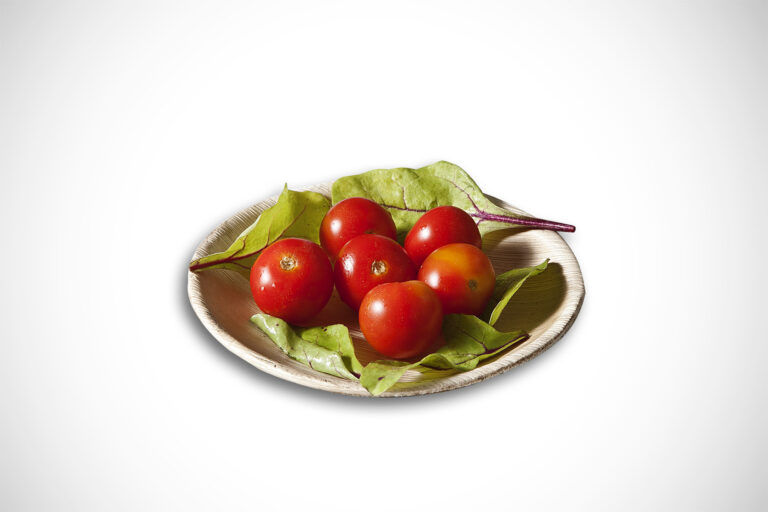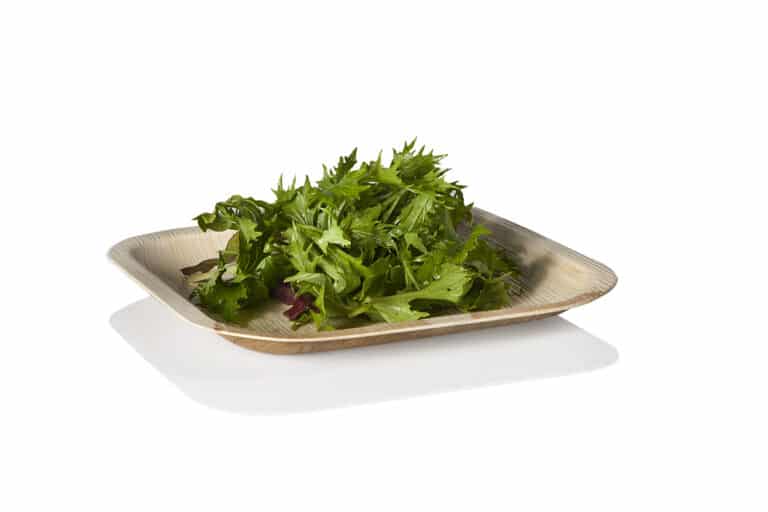Lets Start
We are quite sure that for most of our readers and clients these 38 points are known and obvious. After all, you are here in search of eco-friendly products and for the best product – Areca leaf plates and tableware.
But we think it’s a good idea to make things as clear as possible to everyone. In a clear list with the basic information so that everyone of us can do his best to be eco-friendly. At home, getting around, what to wear, what to eat (and not eat), how to travel, at work and at school.
At Home
1. Renewable energy for electricity.
Solar photovoltaic (PV) installations convert the sun’s energy into electricity, using photovoltaic cells, or solar panels. This allows you to generate your own reliable, sustainable and low-maintenance source of energy.
Once installed, they don’t release any emissions in their lives and they don’t produce any noise or air pollution. This can greatly improve local air quality which has respiratory health benefits.
Solar PV can also be combined with electric heating systems, such as heat pumps so you can potentially run your heating and hot water entirely from renewable sources.
Installing solar battery storage to accompany your solar PV system allows you to store energy and use it at any time of day and during power outages. This gives you complete independence from the oil and gas-fueled power grid.
2. Smart Thermostats
A home eco-friendly solution that is more easily implemented in the short term is a smart thermostat. These Wi-Fi-enabled features can be remote-controlled from any smart device. They can be connected to your central heating system, all types of boilers and air conditioning systems.
This ever-evolving technology remembers your home’s heating patterns and they know when to heat up or cool down your home based on outside temperatures. They use presence sensing technology that will automatically switch off your system when you are leaving the house and fire it up in time for you coming home.
This is useful in reducing energy demand from fossil-fueled power plants, which has great cost benefits for your energy bills.
3. Energy Efficient Lightning
Energy-saving light bulbs last up to 12 times as much as traditional bulbs, providing the same amount of light quality for much less energy. 80% of the energy used to power traditional bulbs is lost in heating energy, whereas LED light bulbs run at 80-90% energy efficiency.
4. Upgrade to Energy Efficient Appliances
Once it’s time to replace your washing machine, fridge freezer, oven or dishwasher, new efficiency measures have upgraded market standards so that energy-saving appliances are readily available for a range of prices. You can identify its energy efficiency by checking the energy efficiency label which runs from A-G, with A being the most energy-efficient and eco-friendly.
5. Use Eco-friendly cleaning products
A lot of mainstream cleaning products containing detergents, preservatives, or foaming agents are made from various toxic chemicals that wash up into streams and rivers, causing water pollution that enters ecosystems and damages biodiversity.
Switching to eco-friendly products reduces the risk of exposure to toxic chemicals that are harmful to humans as well as the environment.
You can also easily make your own natural cleaners by mixing vinegar, lemon juice and bicarbonate of soda. This is a eco-friendly and sustainable and even cheaper alternative that reduces toxic chemicals and packaging waste in your home.
6. Eco-Friendly Household Products
While you cannot control whether or not the products that you dispose of will end up being recycled and reused, you can purchase products that are made of non-synthetic ingredients and are biodegradable to limit the impact of this waste.
Eco-friendly products dissolve due to contact with bacteria and fungi. This means that if they come into contact with nature, they won’t cause any environmental harm, as they disappear through natural processes.
These products might include
Recycled toilet paper
Natural ingredient shampoo
Natural deodorant
Bamboo toothbrush
Washcloths made from hemp or agave fibers
7. Double Glazed windows
Double glazed windows have two sheets of glass panels with a gap between them and triple glazed windows have three sheets with two gaps. The gaps keep air or gas (usually argon gas) vacuum sealed. The gas prevents heat loss since it is a poor thermal conductor and so heat cannot easily pass through it.
Low-E glass is most effective for preventing heat loss as it has an invisible layer of metal oxide on one internal layer which reflects heat directly back inside.
As well as keeping your home warm, upgrading your windows reduces outside noises traveling into your house, and increases security.
8. Loft Insulation
Up to 25% of your home’s heating energy is lost in the roof. You can stop rising heat escaping through your loft by laying down blanket loft insulation rolls which you can alter to fit between the joists in your loft.
9. Radiator Foil
Radiator foil is a thin foil sheet that reduces heat loss into external walls by reflecting heat back into the room. This is a quick, simple and cheap alternative to wall insulation.
10. Draught Excluders
These can be adhered around window and door frames using foam, metal or plastic strips. You can also stop draughts coming in through your letterbox and keyhole. These excluders are usually cheap, easily installed and can be found in most DIY stores or online.
11. Window Seal Replacement
You can replace your window seals every 5-10 years since over time, they expand and contract with the changing temperature and lose their air-tight grip.
Resealing your windows prevents heat loss from draughts as well as preventing moisture from building up which can eventually lead to mold and further structural damage to the area around your windows.
12. Upgrade your Boiler
Modern boilers are now rated between A-D efficiency rating and are required to use condensing technology, which is 25% more energy-efficient than non-condensing boilers since it uses waste heat to preheat cold water.
Gas-fired boilers, like comb boilers, can provide heat on demand straight from the main lines so energy is not wasted from storing heat.
Hydrogen boilers work the same way as usual modern boilers, but they burn hydrogen gas instead of natural gas. This new energy source is also emissions-free, with the only by-product from combustion being water. Some manufacturers have also released ‘hydrogen ready’ boilers that run on hydrogen fuel should it be brought to market.
Biomass boilers use biological material, or biomass, to produce heat through combustion. Biomass can also be converted to produce sustainable fuels such as biodiesel.
Despite expensive upfront costs, biomass boiler running costs are less vulnerable to market spikes than gas/oil-fired counterparts. Additionally, they do fall under some government grants including the ECO4 Scheme, which helps cover the costs of installing them.
13. Heat Pumps
Heat pumps offer an eco-friendly alternative to boilers and air conditioners. They extract heat from the air, ground or water and transfer it into your home, or to cool your home in the summer months, they extract heat from inside your home and send it outdoors.
Heat pumps eliminate the need for gas pipes and oil tanks. 4kW of thermal energy is generated for every kWH of electricity used by a heat pump, resulting in a 200-600% efficiency rate and significantly reducing your home’s carbon emissions compared to gas or electric heating.
14. Solar Thermal
Solar thermal systems use heat from the sun to provide space and water heating or, high-temperature collector solar thermal systems can also be used to generate electricity. They can be combined with your usual heating and hot water system to diversify your supply and utilize the sun’s energy at optimal times throughout the year.
This will reduce your carbon emissions and reduce your hot water costs, saving at least 40$ on energy bills a month, depending on what type of heating source you switch from.
Getting Around
15. Electric Cars
Diesel and petrol-fueled cars are a major contributor to global warming, mainly due to the amount of CO2 emissions they emit. For example, 27% of the UK’s total emissions came from transport in 2019, with 91% of this coming from road transport vehicles.
Electric vehicles are the most sustainable way to drive since they don’t use traditional fuels at all to run. They don’t produce any air pollutants, in the form of gas, particulates, or air toxics
16. Bicycles
Cycling is great for your health and it’s enjoyable! But this is just another benefit and here we are talking about the environment. You can easily reduce your carbon footprint when riding your bike whenever possible. Researches in Europe found that commuting by bike instead of by car just once a day, decreases your transportation carbon footprint by 67%.
And if this is not enough for you, you do not even need to fight for a parking place with others. Eco-friendly and much more!
17. Public transport
Wow. Loads of benefits apart from the eco-friendly benefits, including much more safety and much less stress.
Public transport obviously leads to less air pollution as more people commute via single vehicle reducing 45% of emissions. Just in the U.S.A, it is estimated that public transportation saves 37 million metric tons of carbon dioxide annually. More than this, less cars on the road, means less need to build new roads and we do not have time to explain how bad it is!
What We Wear
18. Wash Your Clothes Less
Synthetic material sheds microplastics in the washing machine, which find their way to the ocean. The ocean floor holds over 14 million tones of microplastics. This number is increasing with textiles contributing 500,000 tones yearly. 16% of the microplastics released into the oceans come from washing these synthetic clothes. The toxic fibers degrade ecosystems and are ingested by sea life and eventually mammals, including humans.
Over washing your clothes at high temperatures will also affect their quality over time. It’s also a great waste of water and energy from your washing machine. Also, be sure to only buy non-toxic detergents and avoid the use/overuse of tumble dryers.
19. Don’t Throw Wearable Clothes Away
The UK produces around 1 million tones of textile waste per year. Once in landfill, they can then take hundreds of years to decompose and release greenhouse gasses (GHG) in the process.
Ultra-fast fashion, a mutation of fast fashion, has emerged as online clothing stores produce and release thousands of new items per day. Participating in these rapid trend cycles is creating a culture of over-consumerism.
You can make easy alterations and repairs to your clothing to keep them for longer or to adjust to current trends. Vintage and second-hand outlets will offer more affordable alternative options, often based on the same items of clothing.
If you would like some new clothing, be sure that it’s of good quality so that it lasts you a long time. You can also research sustainable brands that limit the impact of production and are transparent about their supply chains.
What We Eat
20. Eat Less Meat
Meat and dairy are responsible for the majority of GHG emissions in the agriculture industry.
Emissions occur from the stage of production, to processing, packaging, and to finally being delivered. Farming releases two powerful greenhouse gasses: methane from livestock during digestion, and Nitrous Oxide as an indirect product of organic and mineral nitrogen fertilizers.
As the majority of emissions are a result of production and preparation of meat and dairy, consuming less meat would be a positive contribution to reducing GHG emissions. While some opt to drastically change their diets to a vegan one, simply reducing your intake of meat can already have a big impact.
21. Shop Local
The average item of fresh food travels 1,500 miles before we buy it. These carbon-heavy value chains create emissions through transport, refrigeration and across production processes.
You can eliminate this by buying from local producers where you can. A well-established local food economy strengthens supply chains meaning there are more supply options during shortages. Local, seasonal produce also has higher nutritional value since it has spent less time from its source. Meanwhile, international produce is grown to artificially exceed its natural shelf life which compromises its nutritional value.
22. Limit Food Waste
The UK produced 9.5 million tones of food waste in 2018, the equivalent of 25 million tones of greenhouse gas emissions. 70% of this was found to come from households. This raises emissions through increased industrial production and transportation.
You can limit your household food waste by portioning your meals reasonably, only buying what you need and using food waste as fertilizer for soil and plants.
How We Travel
23. Limit Plain Transportation
Emissions from aviation could take up one-sixth of the carbon budget remaining to limit 1.5 degrees of global warming. Within the aviation industry, options for rapid decarbonization are slow and limited, therefore, personally limiting flights is the best way to reduce emissions. This is until sustainable aviation has become a viable, mainstream alternative.
Train travel is fast becoming a more eco-friendly and economical option, with new expanding train networks developing across Europe.
24. Avoid Cruise Holidays
Cruise holidays have become increasingly popular. However, these big ships contribute massively to GHG emissions. Carnival Corporation’s fleet of 47 cruise ships emits 10 times more sulfur oxides (SOX) than 100 million cars do.
It is important to be aware of your holiday’s footprint on the environment, and opt for more sustainable holidays when possible.
25. Practice Sustainable Tourism
Following the pandemic, people have become more aware of their cultural, economic and environmental impacts as tourists, with 72% of people surveyed by Booking.com admitting that they think sustainable travel is vital.
Increasingly, people are engaging more in sustainable tourism which involves limiting their carbon footprint while traveling, being tactical with their spending power and helping to sustain the natural environment that they have the privilege to visit.
This helps prevent over-tourism which is the overcrowding of tourist destinations that disrupts the local way of life such as through the rise in housing and renting costs and the commodifying of local traditions.
Pollution, especially through excess waste, leads to the degradation of natural or archeological sites and depletion of natural resources including water, soil nutrients and biodiversity.
26. Green Key Certified Accommodation
When looking for accommodation abroad, it’s important to look for places that are most sustainable in their business. Selecting Green Key certified accommodation is one way to do that.
To be Green Key certified, there are 13 criteria that need to be fulfilled. Being Green Key certified means that the accommodation respects local cultures and traditions, takes care of the environment and treats its employees fairly.
27. Unplug Before Travelling
Even if electronic devices are shut off or in sleep mode, they are still using energy. Being away for too long wastes a lot of energy that could otherwise have been plugged off. So, before going on vacation, make sure to unplug your devices from the wall sockets, in order to save electricity.
28. Pack Light
Flying to foreign destinations will emit emissions no matter what. However, if flying is the only option, then travelers can try to pack light in order to be able to still minimize the amount of pollution. The more luggage a plane carries with them on their travels, the more fuel the airplane needs to fly.
At Work
Being conscious of the environment does not have to be limited to the home. There are many different things that employees can do to minimize environmental damage and make activities at their workplace more sustainable.
29. Look for an Eco-friendly pension supplier
Pension funds represent the largest group of investors in the UK, holding around 2 trillion pounds in assets. By 2021, an estimated £128 billion was invested in fossil fuels from UK pension funds, that’s nearly £2,000 for every person in the UK, Friends of the Earth found.
A mass switch from fossil invested pension suppliers across the UK would reduce 19 tones of GHG emissions per year. Investigating your pension supplier and making a switch should you discover their investments in fossil fuels puts increased pressure on suppliers to diversify and decarbonize their investments.
30. Be Mindful of Printing Paper
A lot of paper is printed in an office space. It’s unavoidable that paper will be printed, whether it’s for a meeting or to sign a contract. However, printing out a document may not be entirely necessary and all ways print from both sides.
The best thing you could do is to think if it is absolutely required to have a document in hard copy. If not, you could consider sending it in an email. In order to minimize their carbon footprint, contracts can be sent and signed digitally.
31. Encourage Public Transportation for Employees
Depending on the distance from the employee’s home to the workplace, there are different ways to commute to work. While using a car may seem like the easiest and fastest option, taking the train or bus would pollute less. Depending on your city’s biking infrastructure, you could even opt to ride a bicycle to work and have a shower there.
32. Use Electricity Wisely
Offices naturally require electricity to power their equipment, amenities, facilities. However, it’s important to be aware of the energy consumption and be conscious of what is required.
One way companies could contribute to a greener office is by ensuring to plug off electric devices when not in use. It’s good to stay aware of the energy consumption and to make changes when the usage is predicted to go above the limit set for the month.
33. Encourage the 5 R’s
These five well-known principles of waste management will make your office more eco-friendly. Offices should set up different containers for different types of products. Use recycling bins for paper, plastic, and soft drink cans, rather than throwing everything out in one bin.
34. Use Recyclable Food Containers to Minimize Waste
When serving food at the office cafeteria, offer employees recyclable food containers so that they can take any leftover food home. This will greatly reduce food waste. While having any event at work, sustainable plates. The leading product in the world with no doubt is for plates made from Areca leaf found in south east Asia.
At School
There are a lot of things that parents can do to ensure that their kids are more eco-friendly at school. Whether it’s walking your kid to school or ensuring that they use environmentally friendly school supplies to minimize the damage done to nature. Inspiring kids to contribute to a greener environment and world is something we could and should do.
35. Make Green Choices to go to School
As driving emits pollution, parents should consider alternative ways of getting their children to school. Whether that is walking them to school or making them use public transportation. Using the car less can make a huge difference to the environment in the long run. In some cities like Copenhagen and Amsterdam, parents use cargo bikes to ride their children to school, which is a great eco-friendly solution to using a car.
36. Donate Clothes
As children grow older, their school uniforms will undoubtedly have to be changed. Instead of throwing the clothes out, parents should consider donating the clothes back to the school or to other parents who are in need.
37. Use Containers, Not Paper Bags
When making lunch for children to bring to school, parents should invest in lunch boxes that are reusable, instead of giving them food in paper bags that are to be thrown out. If a food item truly needs to be wrapped, avoid using cling wrap and opt for more environmentally friendly wrapping materials like beeswax.
38. Invest in Electronic Devices instead of Paper
As technology is adapting different scenarios in our life, there are a lot of different products that can be used to take notes with. Although investing in a laptop or a tablet may be expensive, your child could not only save time in taking notes but can also help reduce paper waste at school.








